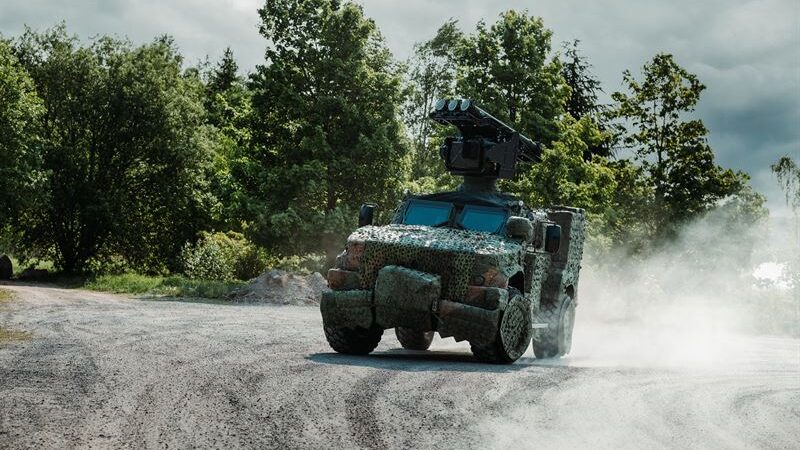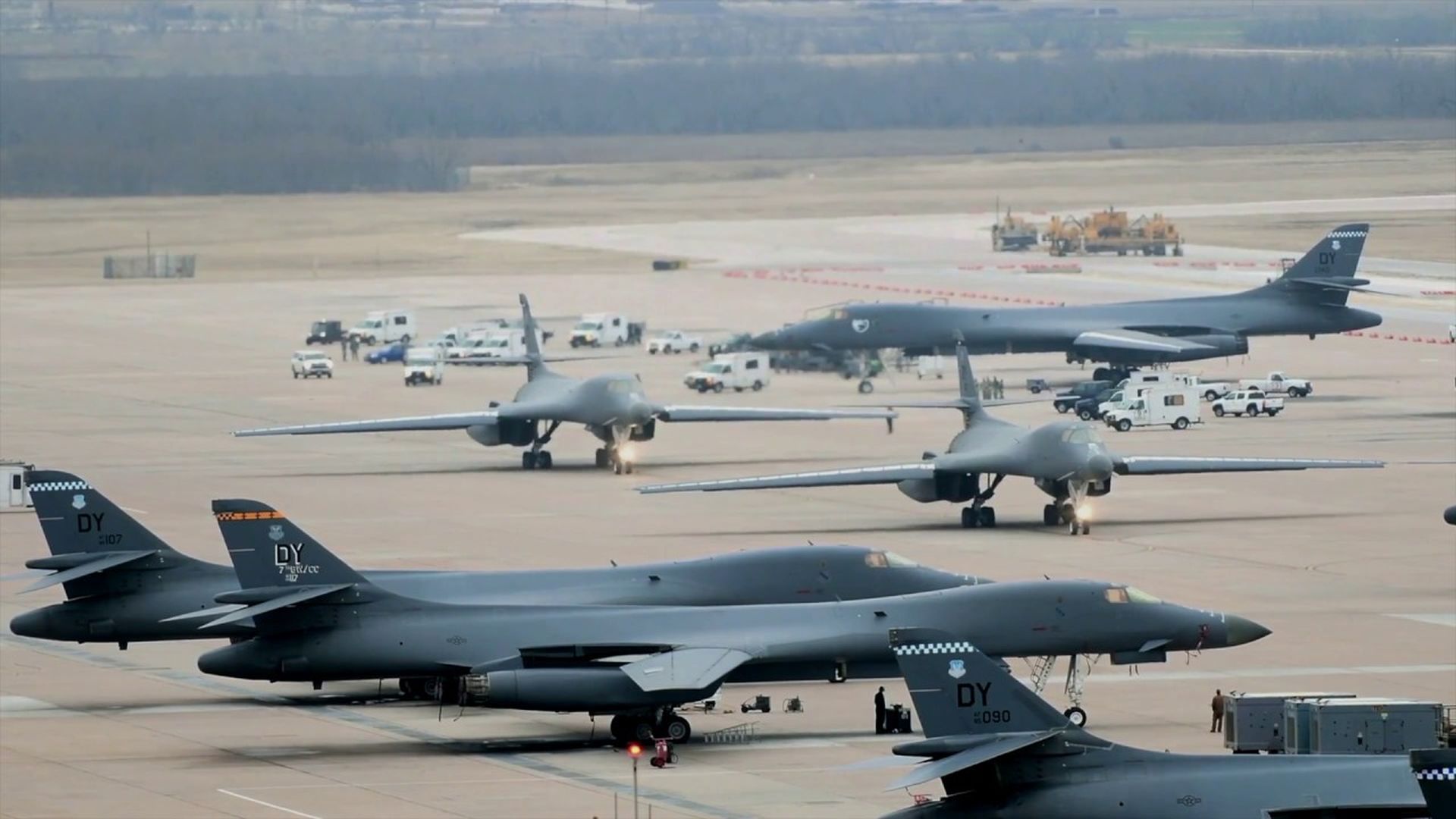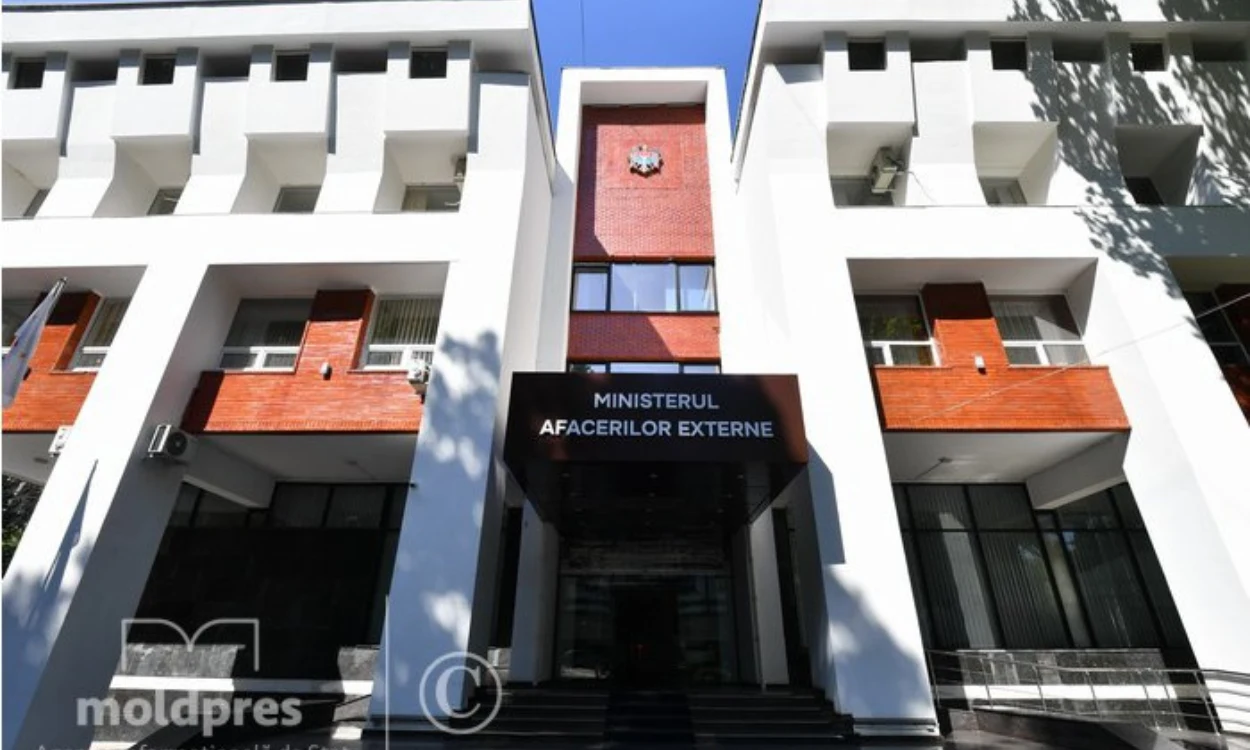A Saab MSHORAD missile firing unit sits atop of an Oshkosh Joint Light Tactical Vehicle (Saab)
BELFAST — Swedish manufacturer Saab secured a new air defense order from Lithuania today, valued at $123 million and based on the company’s Mobile Short Range Air Defence (MSHORAD) solution.
Saab said in a statement that the order was placed within a framework agreement between itself, the Swedish Defence Materiel Administration (FMV) and the Lithuanian MoD. The package specifically covers mobile firing units, mobile radar units, a command and control (C2) system, a training package and the RBS 70 NG trainer.
Saab will equip MSHORAD firing units on to US firm Oshkosh Joint Light Tactical Vehicles (JLTV) prior to customer deliveries, scheduled to take place between 2025 and 2027.
“MSHORAD is designed to ensure the protection of certain facilities, areas and critical infrastructure,” said Laurynas Kasčiūnas, Lithuania’s Minister of National Defence. “The advantage of this system is mobility, so it is an extremely necessary system that will significantly strengthen the capabilities of the Lithuanian Armed Forces. We are currently using the older generation RBS 70 air defence system and Bolide missiles.”
Saab added that the MSHORAD system is made up of a mobile radar unit based on the Giraffe 1X radar, a mobile unit evolved from the RBS 70 NG short range air defense system, both of which are connected to the company’s Ground Based Air Defence (GBAD) C2 solution.
Speaking at a Politico event today on the sidelines of the NATO summit in Washington, DC, Kasčiūnas pointed to air defense as one “big capability gap” the eastern NATO nations have, one that must be shored up to deter Moscow.
“One of the tasks for me, I would like to create a Lithuanian hedgehog,” he said, “which could be so strong [that it would be] uncomfortable for bigger Russia to swallow.”
FULL COVERAGE: Key news from the NATO summit in Washington, DC, from our team on the ground
Investment in new air defense systems by Lithuania has accelerated significantly since Russia invaded Ukraine. Vilnius struck a €200 million ($216 million) deal with Norway’s Kongsberg in December 2023 to acquire additional National Advanced Surface-to-Air Missile Systems (NASAMS).
In a June post on X (formerly Twitter) the Lithuanian MoD shared that based on new approval of an additional €136 million, its defense budget amounts to a “record” €2.3 billion ($2.5 billion), equivalent to over 3 percent GDP. At that time it also noted that the new funding would be put toward air defense systems and new infantry fighting vehicles (IFV).
Earlier this month, Kasčiūnas told local reporters that an acquisition of tracked IFV’s will go ahead, pending conclusion of an analysis and negotiation phase, and in support of a plan to form Lithuania’s first-ever tank battalion, according to a report from Lithuanian National Television and Radio (LRT). Lithuania’s State Defence Council has already approved an order for German made Leopard 2 main battle tanks.
“It is very important to have tracked IFVs. Depending on the budget possibilities, either one battalion or two battalions” will be acquired, Kasčiūnas is quoted as saying by LRT.
Lithuania completed the first phase of its 2016 IFV Boxer program, valued at €670 million in January, after announcing it had taken delivery of 89 production standard wheeled vehicles and two prototypes.





















Discussion about this post